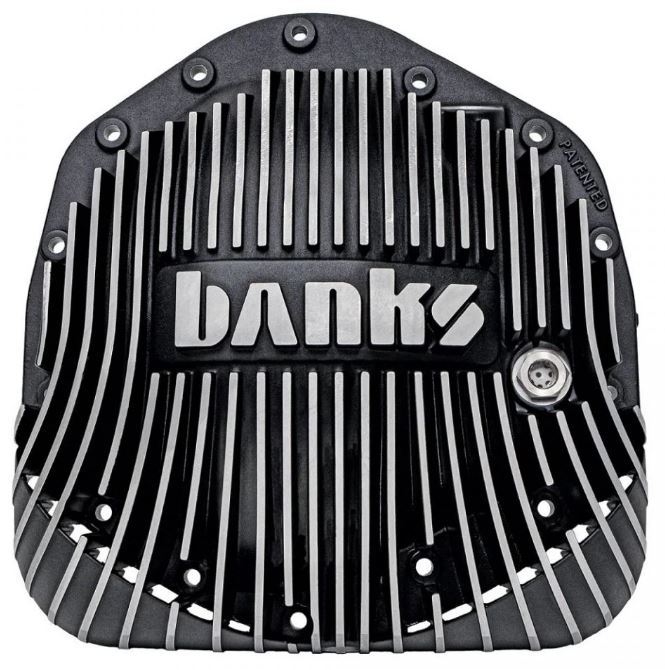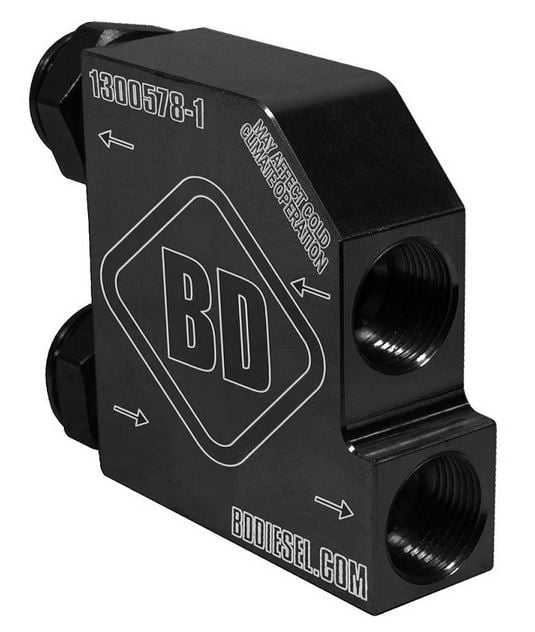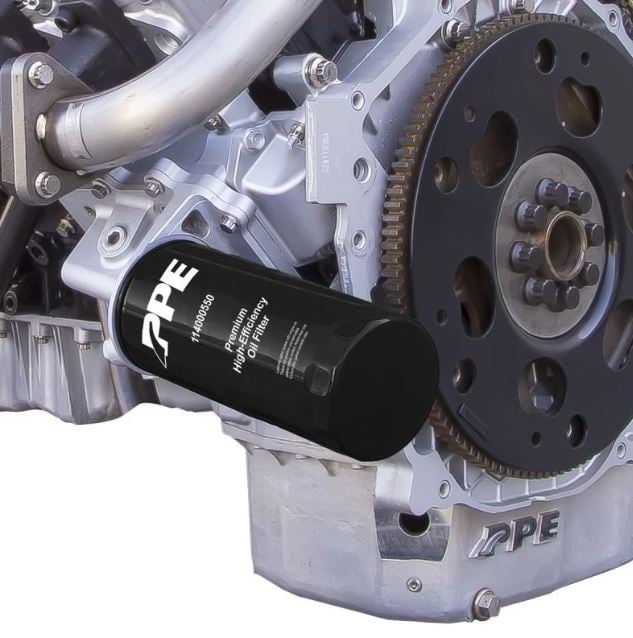One thing Diesel engines are known for is being able to outlast gasoline engines by quite a good margin. While most drivers trade in their trucks well before they reach the 7-digit milestone, the truth is, the engine and drivetrain usually will be more than capable of rolling over the odometer. If you read some of the hotshot trucking forums, its commonplace to see trucks that are just a couple of years old that already have 500,000 miles on ‘em, since they spend all day, every day running coast to coast with a fully loaded trailer. If that’s not a torture test, I don’t know what is.
Just last month, I sold my OBS Chevy K2500 Suburban, but the buyer lived on the opposite side of the country. Rather than driving it 2,000+ miles home, they hired a shipper who arrived with a 2wd 5th gen Ram dually and a triple-axle gooseneck wedge car hauler. On the back he had two brand new 5th gen Ram 2500 crew cabs, and just barely enough room left over to slide the 3/4 ton ‘burb onto the back. While I suspect his truck was running right at the limit of its trailer weight rating, I was curious how many miles the 2020 Ram Dually had on the odometer. The operator told me he was just about to roll 180,000 miles, and he planned on running the Ram for many years to come.
This answer intrigued me, as I was impressed with how many miles he had racked up in such a short time, but it got me thinking about different maintenance items and upgrades you might do if you want to get the best longevity out of your truck. We have focused on towing specific upgrades in other articles so we won’t get into that, but today we’re focusing on parts that will help your powertrain last for the long haul.
Temperature Control is Key
One thing most popular upgrades for a diesel pickup have in common is they keep temperature under control. Every drivetrain system on your truck produces heat, and to make those components last as long as possible, you want to shed as much excess heat as you can. This includes everything from the turbocharger to the transmission, differential, and of course the engine itself.

In the case of my hotshot shipper, I suspect one of the systems on his drivetrain that got the warmest and likely the least amount of attention was the rear axle. His journey from Utah to Florida would likely take him eastbound on I-70 into Colorado, which has some very steep mountain passes, and climbs from 4,500 feet to a maximum elevation of about 11,000 feet above sea level, and when loaded at 30,000 lbs or more, the fluid temps in the rear axle likely surpassed 300 degrees Fahrenheit on more than one occasion. When any oil reaches elevated temperatures, it begins to chemically break down and become less effective at lubricating metal parts, which can in turn lead to more heat, and eventually premature bearing failure. If you tow or want to put a lot of miles on your diesel truck, the rear axle needs some help running cooler, so a Banks Ram-Air differential cover is a worthwhile investment. Banks designed a patented cast aluminum diff cover that uses scoops to draw air from below the axle and pass it across a series of fins on the back of the cover to aid in heat rejection, and the inside features grooves to direct gear oil onto the pinion and carrier bearings. This “lubricant raceway” as Banks calls it offers much better lubrication when compared to most flat back style aftermarket diff covers. In testing, the Ram-Air cover allowed the axle to cool down 4 times faster after ascending a grade, and it keeps the axle up to 61F cooler while climbing up the hill. In terms of temperature, 61 degrees can make a huge difference in the longevity of your rear axle, so the Ram Air is a no-brainer.
When you install the Banks diff cover, you will have to drain the old fluid and refill the axle once the new cover is in place, and this is a perfect chance to upgrade the fluid as well. While most people change their engine oil on time, it’s easy to forget about the fluid in the rear differential. On average, it should be switched out every 50,000 miles, but under severe operating conditions like towing across the Rocky Mountains, it might be wise to change the fluid a little more often than that since there is no filtration system in the axle. Schaeffer’s Extreme Performance Gear Lube is a great choice for the differential on a long-lasting diesel truck, as synthetic fluid is much better at surviving in a high temperature environment without breaking down and losing its lubrication properties, which means the ring and pinion gears as well as the bearings will last longer.
Cool and Clean Transmission
Every diesel pickup truck sold today is equipped with an automatic transmission, and they can withstand a lot of abuse behind a diesel engine, but if they are neglected or abused, their lifespan is much shorter. However, your automatic can be made to last a lot longer if it is maintained properly and given a few select upgrades. Just like with the rear axle, temperature control is key. To remove heat from the transmission, all manufacturers have installed a transmission fluid cooler on the front of the truck which will lower the temperature of the fluid before it gets sent back to the transmission, but in some cases, the fluid is rerouted back to the transmission before it ever gets cooled off. On the Ram 68RFE or AS69 for example, a thermostatic bypass valve intercepts the fluid and sends it back to the transmission when the fluid temperature is cold, which is intended to help the transmission warm up a little quicker for more efficient operation. The problem is transmission fluid is inherently dirty, and over time the valve can become stuck or clogged with debris, and when it does stick, usually it’s in the bypass mode which means no fluid will reach the cooler, and the transmission temps will skyrocket. Of course, this will shorten the life of your transmission and lead to premature failure, so to prevent that, BD Diesel offers a thermostat bypass block that installs in place of the original valve and allows fluid to continuously be sent to the cooler up front, which means much cooler fluid temps and a longer lasting transmission.

Once you have fluid going where it should without any interference, the next challenge for a long-lasting transmission is making sure the cooler is adequately sized to keep the fluid temps under control. Extreme towing conditions or warmer than usual ambient air temperatures can overwhelm the stock trans cooler, so to beat the heat, Mishimoto offers larger than stock trans fluid coolers for just about every diesel pickup out there. They are designed to bolt in place of your original cooler for a simple installation, but they are much larger than stock so they can reject much more heat. On a 3rd gen Ram for example, the Mishimoto trans cooler has 212% more core volume that stock, which translates into way more surface area for drawing heat away from the transmission.
Finally, after your fluid temps are under control, the next hurdle for a long-lasting automatic transmission is clean fluid. Just like your engine, an automatic transmission should have its fluid and filter changed on a regular basis, and more often under severe operating conditions, but your transmission fluid often gets neglected until problems arise. Usually when you start to notice problems with your transmission like rough shifting or slipping when in gear, its too late and severe damage may have already occurred, but keeping fresh, cool, and clean fluid in the transmission can prevent debris and sludge from clogging hydraulic valves and solenoids inside the transmission. The stock filters do OK, but an aftermarket filter can do a better job of trapping small dirt or metallic particles. PPE makes high efficiency spin on transmission filters for the Allison 1000 which have a much larger filtration area than stock, and they will trap much smaller dirt particles as well. In addition, installing a deeper cast aluminum transmission pan from PPE or Mag Hytec will increase the fluid capacity and heat transfer capabilities, which once again, means cooler operating temperatures.
Engine Cooling and Lubrication
I think the one maintenance item I preach about more than anything is a timely engine oil and filter change. Everyone knows you need to change the oil every now and again, but beyond that, many owners simple head to the nearest Jiffy Lube when the light on the dashboard tells them to, but they have no idea what’s really being put into their engine, nor do they care. Inside a diesel, the oil has a lot of jobs to do. Tiny squirters spray a stream of oil onto the bottom of the pistons to help cool off the heat made during combustion, and oil is also sent in between the crankshaft and its bearings through tiny passageways under high pressure where it is responsible for stopping any metal-on-metal contact. Lubricated parts include the crankshaft, camshaft, connecting rods, wrist pins, valve lifters, pushrods, rocker arms, and more. Needless to say, the oil inside your engine has a lot of jobs and works in some pretty harsh conditions, but does a quality oil really make a difference?
In short, of course it does. Because of the extreme conditions inside your engine, conventional oil has a hard time lasting for any length of time in that environment, and it quickly breaks down and loses its lubrication properties. As discussed earlier, synthetic lubricants are able to withstand much higher temperatures for a much longer time before breaking down, but an oil like Schaeffer’s 9000 goes one step further. The 5w-40 formulation is a great year-round oil, but it works especially well in the cold weather where it will flow rapidly and provide better lubrication and protection when you fire up a cold engine. The best part is their suggested service interval is 9,000 miles, so if you use your truck for hauling every day, you don’t have to visit the shop quite as often to change the oil. You can even extend the oil change interval longer than that if you have an oil analysis done and it comes back clean. While a synthetic oil is a little more expensive than conventional, the longer lifespan and greater protection it gives your engine is well worth the slight increase in cost.

The final suggestion I would make when it comes to your engine oil system is to use a premium filter so any dirt particles will be trapped before they make it into any critical areas of the engine. PPE makes high-efficiency engine oil filters for all Duramax engines (including the new 3.0 I6 in the Silverado 1500), and for Ford or Ram your best bet would be to run either an OE filter or a premium aftermarket option like K&N, Napa Gold, or a Fleetguard Extended Life.
Keep Your Fuel Clean
One thing that sets a diesel engine apart from its gasoline cousins is its high-pressure direct injection system. The newest gasoline direct injected engines run with a rail pressure of around 4-5,000 psi, but new diesels run about 8 times more pressure, reaching close to 40,000 PSI in the fuel rail. That immense pressure puts a lot of stress on the mechanical parts of the fuel system like the injection pump and injectors, and as the miles add up, failures in the fuel system can occur. Some engines are less prone to fuel system failure than others, but trucks equipped with the Bosch CP4 are known to be problematic, and when they do fail, usually the entire fuel system needs to be replaced as a result. Engines equipped with the CP4 include the 2011 to 2016 LML Duramax, the 2011 to present 6.7 Powerstroke, and the 2019 and 2020 6.7 Cummins. If you’re lucky, this failure will be repaired by the dealership under warranty, but if not, you’ll be wishing you took a few steps to help your injection system last a little longer. One of the leading causes of failure in a common rail system is fuel contamination by dirt, water, or even air, so removing the cause of failure is a smart move to protect your engine.
You’ve probably seen a diesel truck driving around with a pair of filters hanging just below the bed and wondered what their purpose is. While some might think it’s simply a “flex” or a status symbol, in truth, a frame mounted lift pump from FASS or Airdog will go a long way to extend the life of your diesel fuel system. Inside the lift pump, fuel is routed in such a way that all trapped air is removed, and then it passes through a water separator as well as a 2-micron filter, so microscopic dirt particles are trapped before they make it up to the engine, and of course, any water that might be in the fuel is removed as well. This ensures any of the harmful particles in the fuel are removed, which will help your injection pump and injectors last longer, which is great for any diesel, but especially helpful on trucks equipped with a CP4. A FASS or Airdog lift pump can also lead to an increase in fuel mileage, and there is a performance benefit as well if you own a 2001 to 2016 Duramax. These models of Duramax did not use any lift pump at all from the factory, and because the injection pump also draws fuel from the tank, it can sometimes have a hard time keeping up with fuel demands and fuel pressure will drop. A FASS or Airdog lift pump can share the workload and let the injection pump focus on its primary job, which can result in an increase in horsepower since maximum rail pressure will be maintained.
Drop the F-Bomb
One more thing you may consider on a truck you want to last as long as possible is a good fuel additive. The quality of diesel fuel you buy at the pump can vary between brands and where you purchase it but adding some F-Bomb Diesel Fuel Additive each time you fill up can raise the quality of the fuel in your tank to help the engine run a little smoother, increase fuel mileage, and it will even give you a bump in horsepower. The most important part of any fuel additive, however, is the increase in lubricity, which means F-Bomb will make your fuel system last longer as well.
Go The Distance
To get your truck to a million miles, you’d have to drive about 385 miles a day, Monday through Friday for 10 years straight. Granted, that’s an accomplishment very few pickup trucks will reach, but a few have done it. Even if you don’t plan on reaching a million, 200,000 miles is a goalpost that’s easily attainable, so by installing a few key upgrades and being diligent with all your fluid and filter changes, your truck will easily cross the finish line and be ready for more.

